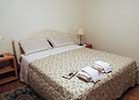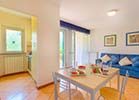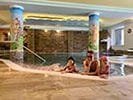Lipari how to get there, where to sleep and the beaches

The pearl of the Aeolian archipelago
The island of Lipari is the largest in size and population among those of the archipelago; wonderful landscapes and beautiful beaches help make it the main tourist destination in the Aeolian archipelago.
Lipari
Lipari is the largest of the seven islands of the Aeolian archipelago, and from the point of view of tourism, is the most advanced since it retains a distinctive tranquility.
The quiet plateaus perfect for hiking, the cliffs overlooking the sea that offer beautiful views and the fascinating beaches help make Lipari a very popular destination among visitors from all over the world. With its mountainous morphology and rugged coastline adorned with unique beaches, wide bays and deep caves, Lipari is best explored by sea.
The town of Lipari is located at the foot of the Castle Fortress, an acropolis of Greek origin. It is not only the main center of the island, but also the point of fundamental connection between the different islands of the Aeolian Islands. The city centre is full of shops, restaurants and bars. Adjacent to the Cathedral of San Bartolomeo, in the old Palazzo dei Vescovi, there is the relevant Aeolian Archaeological Museum, which tells a story of five thousand years of settlement in the archipelago.
On the island emerge the villages of Canneto, Acquacalda, Quattropani, Lami, Pirrera, Serra and Pianoconte, as well as the Terme di San Calogero. The highest peak of Lipari is Monte Chirica, which rises to 602 meters above sea level, while the Muria Valley, characterized by red rocks, reveals its volcanic nature.
The nearby islands of Vulcano and Salina are perfect for day trips, but all the islands of the archipelago are easily accessible and are ideal destinations for trips. The ports for hydrofoils and ships are located in Marina Corta and Marina Lunga.
The beaches of Lipari
The beaches of Lipari are real natural jewels that, together with the beautiful bays and deep caves, create an extraordinary visual spectacle, especially if you are lucky enough to explore its coasts aboard a boat.
Among the most famous beaches, stands out the Spiaggia Bianca, also known as Papesca beach. Located about 4 kilometers north of Lipari Country and just beyond the village of Canneto, owes its name to the evocative extension of pumice powder that forms its charming beach.
Among the most popular beaches are the cove of Portinente, the beach of Valle Muria, the beach of Porticello, the beach of Gabbiani, accessible only by sea, Acquacalda with gravel, and Canneto with sand and gravel.
Equally fascinating are the beach of Vinci, overlooking the rocks of Pietralunga, Pietra Menalda and Brigghio, and the wild beach of Punta del Pericato. The beach Praia di Vinci, south of the settlement of Lipari and just before Punta Crepazza, can only be reached by boat, which has helped to maintain its pristine environment.
Another way to explore the beautiful coast of Lipari is through the panoramic road that runs along it for 26 kilometers.
Papesca beach:
Among the most popular beaches of Lipari, Spiaggia della Papesca, or Spiaggia Bianca, extends along the eastern side of the island, north of Canneto, near Porticello.
Divided in two by a small promontory called Capo Rosso and dominated by a white cliff, the beach is formed by gray pebbles, while the seabed retains the deposits of pumice that create fascinating play of light and color with crystal clear waters from intense turquoise. During the summer months you can rent umbrellas and sunbeds and refresh yourself at the small bar, which in the evening turns into a disco.
Some mining structures and old piers, now reduced to ruins, characterize the landscape of Papesca, which has as a backdrop the obsidian and pumice quarries.
To reach Spiaggia della Papesca, follow the signs for Acquacalda.
Porticello beach:
The beach of Porticello extends along the northeastern coast of Lipari, on the road that leads to the village of Acquacalda, just after the White Beach.
The narrow and long shore, formed by polished grey pebbles and embraced by white walls, is located between the quarries of Campo Bianco and the obsidian flow of the Rocche Rosse.
The beach of Porticello, easily accessible by car or bus, is equipped with deckchairs and umbrellas for rent and is served by a bar.
Valle Muria beach:
The beautiful beach of Valle Muria stretches along the southwest coast of Lipari and is bathed by crystal clear waters, perfect for swimming and snorkeling.
Surrounded by two rocky promontories and framed by a spectacular landscape formed by the stacks of Pietra Lunga and Pietra Menalda, in addition to the channel that separates Lipari from the nearby Vulcano, Valle Muria is a beach of dark sand and pebbles, narrow and long, surrounded by volcanic rocks with bright colors.
Along the beach there are small caves carved into the tuff rock. A rustic bar offers food and drinks during the summer.
To reach the beach of Valle Muria, you can embark from the small port of Marina Corta or follow a path downhill, which takes about 15 minutes walk, which branches off about 3 kilometers from Lipari Village along the road to Pianoconte.
Praia di Vinci beach:
The beach of Praia di Vinci can only be reached by sea, starting from the port of Marina Corta, and is characterized by a spectacular and fascinating atmosphere.
The pristine beach of sand and big pebbles, narrow and long, is located near Punta Crepazza, at the southern end of Lipari, opposite the island of Vulcano. From the beach you can enjoy a panoramic view dominated by the stacks of Pietra Lunga and Pietra Menalda.
The waters around Praia di Vinci Beach, surrounded by an imposing rocky promontory, are crystal clear and ideal for snorkeling.
- The pearl of the Aeolian archipelago
- Lipari
- The beaches of Lipari
- What to see in Lipari
- Where to sleep in Lipari
- How to get around Lipari
What to see in Lipari
Lipari is the largest of the islands of the Aeolian archipelago and its main center, Lipari Country, offers many attractions. If you want to enjoy breathtaking views and beautiful beaches, you won’t have to go far.
When you enter the port of Lipari town, you will be welcomed by the structure of the Castle: a mighty wall dating back to the sixteenth century surrounds the fortress built on a small promontory between the ports of Marina Lunga and Marina Corta. The area of the citadel, inhabited since 4,000 BC, houses the Aeolian Archaeological Museum, divided into three sections.
The city centre, with its relaxed atmosphere and artisan shops, restaurants and bars, is an essential stop. The Cathedral of San Bartolomeo is the main religious building of the entire island: built in the sixteenth century, it boasts beautifully frescoed interiors with floral motifs. The Archaeological Park is located in front of the Cathedral and includes the ruins of a series of huts dating back to the seventeenth century B.C. and some Greek sarcophagi. A little further, you can find the wonderful Norman Cloister.
An unmissable excursion is the tour of the island by boat. Lipari’s beautiful coastline, dotted with beaches and caves, and the cliffs overlooking the sea will leave you speechless.
Lipari boasts several beautiful beaches: Canneto, with dark sand and pebbles, takes its name from the well-kept tourist resort behind; Spiaggia Bianca, famous for pumice dust; Spiaggia di Valle Muria and Praia di Vinci.
Magnificent views can be enjoyed from the top of Monte Sant’Angelo and Quattrocchi.
Lipari Town:
Lipari Town is the main center of the island of Lipari and the entire Aeolian archipelago. This settlement is located in the center of a vast bay along the east coast of the island and is dominated by the Castle Fortress, a fortified citadel built in 1080 by the Normans in a strategic position 50 meters above sea level and surrounded by mighty Spanish walls built in 1560. Inside the fortress there is a Greek tower dating back to the fourth century BC, a reminder of the Greek acropolis, and 5 churches, including the cathedral of San Bartolomeo located in the center of the plateau.
The beautiful square of Marina Corta, the beating heart of the island, is lined with excellent bars and restaurants, just a few steps from the sea. The main promenade is Corso Vittorio Emanuele.
Inside the Palazzo dei Vescovi and other buildings of the town there is the Wind Archaeological Museum, an exhibition of great interest that houses finds from both Lipari and the other islands of the archipelago. In the Archaeological Park, located at the end of the citadel on the right, you can admire many ancient sarcophagi.
From the port of Marina Corta, used by hydrofoils and small boats, you can leave for a boat trip around the island and to reach the White Beach and the Beach Praia di Vinci. The port of Marina Lunga is reserved for ferries.
Canneto:
The village and the beach of Canneto are located along the east coast of the island, 3 kilometers north of Lipari Country, just after Monte Rosa.
Canneto is one of the most developed seaside resorts of Lipari and offers a lovely promenade called Marina Garibaldi, where you can find shops and restaurants.
The beach of Canneto, composed of dark sand mixed with gravel, is enclosed in a picturesque bay and is divided into two parts: Unci in the south and Calandra in the north.
With a length of about 2 kilometers and a narrow width, the beach is partially equipped with umbrellas and sunbeds, and houses a small pier from which boats leave for excursions to the other islands of the archipelago.
Belvedere Quattrocchi:
The Quattrocchi viewpoint is one of the most beautiful and panoramic places of Lipari, offering extraordinary views of the stacks of Pietra Lunga and Pietra Menalda, the bay of Valle Muria, Punta Perciato and the nearby island of Vulcano with its plumes of smoke.
This breathtaking panorama of Quattrocchi is located 3.5 kilometers west of Lipari Paese and can be easily reached by following the road that leads to the small hamlet of Pianoconte, the beautiful beach of Valle Muria and the site of the spa of San Calogero.
The best time to visit Quattrocchi is in the late afternoon, at sunset, when everything is tinged with a blazing red.
Where to sleep in Lipari
Most of the accommodations are concentrated in Lipari town, however you can find places to stay in every part of the island, such as the nearby Canneto or Acquacalda, in the north of the island. If you are looking for more peace and quiet, book a room or an apartment in the western part of the island, between Quattropani and Pianoconte
How to get around Lipari
Lipari can be easily explored by car, motorbike, bicycle, on foot, or by public transport.
You will have full autonomy by moving with your own vehicle, but public transport services, such as local buses, are highly efficient and run the entire island. The company Urso, in particular, offers connections to the areas of Canneto, Acquacalda, Quattrocchi, Pianoconte and Quattropani.
Among the best options to move around Lipari there is certainly the scooter, which is very agile and easy to park. Several rental services are also available at the port. Sports and nature lovers can take advantage of the opportunity to explore the area by bike, along the scenic roads.
If you wish to admire the island from the sea, you can book a boat excursion or use the taxi boat.
ACCOMODATIONS NEAR LIPARI
Explore the best accommodation facilities near Lipari, between Hotels, B&B and Apartments, selected based on thousands of verified reviews.
Last updated on: 15/08/2023 19:23:21
checked by operator: Trude
 BUDGET ACCOMODATIONS
BUDGET ACCOMODATIONS HOTEL
HOTEL APARTAMENTS
APARTAMENTS HOTEL FOR FAMILIES
HOTEL FOR FAMILIES